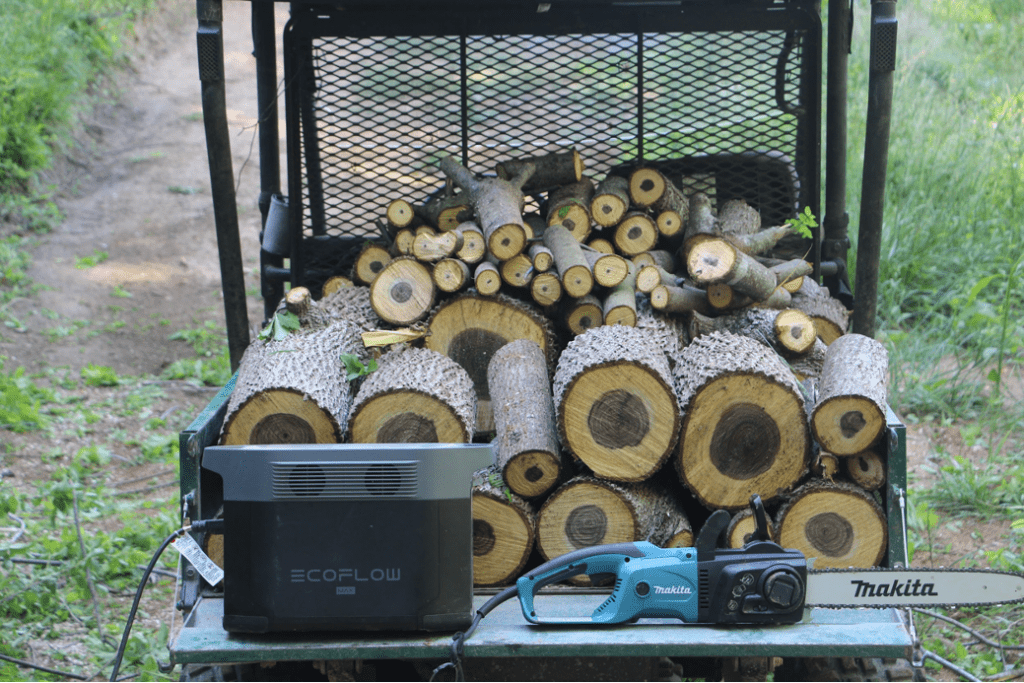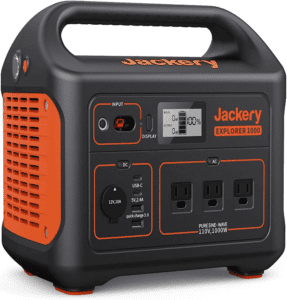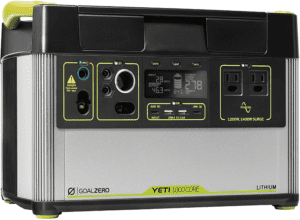The cost of gasoline and diesel is on many people’s minds. With rumors of shortages floating around, it is time to consider alternatives to gasoline or diesel-powered equipment.
Some areas ban gasoline powered tillers, weed eaters, lawnmowers, etc.
California banned all small gasoline engines. That means residents may not purchase small yard and farm equipment.
High fuel costs, shortages not going away soon
As much as one would like to believe rising fuel costs and lack of fuel is a temporary problem, the facts do not support this.President Joe Biden has clarified that he has no interest in increasing oil production in the United States. In fact, he is actively shutting down oil production and not approving any new oil leases here. President Biden asked OPEC to increase production to meet our demands, but they have declined. One must remember that OPEC is notorious for giving the impression they have more oil than they actually do, which does not help the situation.
Diesel shortages are currently a major cause for concern because it fuels the trucks delivering the goods we need to stores and online retail distribution centers. During the pandemic, diesel production decreased due to the lockdowns and shutdowns. Yes, there was an enormous demand for products via mail order, but lockdowns led to a lot less trucks and vehicles on the highway. Plenty of people still work from home, but demand for diesel rose after lockdowns lifted. The problem is that the production never returned and there is no plan via the current administration to do anything to encourage that.
The power grid is under stress
There are many reasons to be concerned about the future reliability of the electric grid.Experts predict many regions throughout the U.S. will experience blackouts this year.
The grid in the U.S. is aging and it relies on equipment and parts that are manufactured on demand. For example, the large transformers you see on light poles. There are not a large inventory of those just lying around.
Our power grid also is vulnerable to cyber-attacks and other sabotage.
Cyber-attacks are perhaps the most likely method for creating blackouts and damaging electrical equipment. Ransomware is a scam that already has been highly profitable for some. It is easier and less expensive for a company to pay the money than deal with the loss of revenue and damages that result from a lack of production or in this case, energy.
Because of these few examples, some solar power will help you maintain a better quality of life.
Power centers and solar panels allow for reliable electricity. With these products, it is possible to keep gardens tilled, mow yards, power tools.
Corded vs. Battery-Powered
My husband and I choose to use electric tools and equipment with standard power cords in most instances. We have a few 12V tools such as electric drills and a few saws.Batteries wear out over time, and they store limited energy. With tools that take batteries, you must wait a significant amount of time to recharge. Extra batteries cost money.
You can use a power center to charge cordless power tool batteries when they are a better option.
Cords can be annoying. And you must exercise extreme caution while using a corded edge-tools like a chainsaw. Cutting through a cord is a possibility. If you do, then rewiring task to learn.
Corded tools and machines are more powerful than battery powered counterparts and cost less to purchase.
Replacement batteries for tools are expensive enough that people sometimes just buy a whole new tool.
I have to say that if you have a smaller power center and solar panel set up, a set of battery powered tools is a good option. Charging up batteries is a low-voltage task. So, while a small power center will not run some corded tools, it may be capable of keeping some battery powered tools going for small projects.
Tilling and Cultivating
My husband and I purchased a Greenworks cultivator to help with our raised bed gardens and keep things tidier between some of the tighter rows in our other gardens. It works well with our EcoFlow power center.It is nice to know that even if gas is scarce or the price rises; we have a way to use some tools to make gardening less labor intensive. The ability to raise food increases our resiliency.
Firewood
Backup heat is important. For many, wood heat is the first or second choice for whole home heating. How many of us rely on a gasoline powered chainsaw to cut up our wood?A few months ago, I purchased a Makita electric chainsaw for my husband. In the past, he used a Stihl chainsaw for the vast majority of our firewood. If you are familiar with chainsaws, then you already know they are heavy, loud, and tiring to use for extended periods of time.
An electric chainsaw is half the weight and avoids the strain that comes with excessive vibration when sawing.
Today, electric chainsaws are half the price of a comparable gasoline-powered saw. The one aspect of electric chainsaws that takes some getting used is to remember to refill the oil. Yes, you still have to use lubricating bar oil with an electric saw. Typically, you fill the oil when you fill your gas tank. With an electric chainsaw, you must remember to check the oil periodically. Running out of gas is not a reminder.
Trimming Brush
Part of living on a back road is maintaining a very long private drive. Of course, a lot of branches grow into the roadway over time, requiring a bit of effort with a pruning saw.
In the past, we used weed eaters with a brush cutter blade but now we use an electric pole saw with a power center. It is really easy to drive around in the Kawasaki Mule and keep things trimmed compared to what we were doing. The pole saw can cut through larger limbs and it does a better job so we do not have to go back and trim things as often.
My Recommendations and Tips
Corded electric tools and equipment vary in energy consumption, and smaller power centers drain too quickly for regular use in this role.I recommend purchasing a power center capable of storing 1000-amp hours or more if you want to use it with equipment like chainsaws and tillers. Larger power centers have the output necessary to start and power decent-sized corded electric motors. Smaller power centers may not even be capable of running a tool for even a short period.
At the same time when purchasing tools, you should consider how big a tool you actually need. Smaller electric tools cost less and they drain power centers more slowly.
The power centers I recommend in the following section are those I have used on our farm. All three manufacturers produce power centers in a wide range of sizes, so if you want some smaller, more portable units, I advise you check out their full line up and match products to meet your power needs.
Jackery
We use Jackery products regularly. In fact, they are one of the first power center we tried out. After over three years of using Jackery products, I have to say there have been no major issues. Jackery recently started selling the 1500 and 2000. We have the 1000, which is powerful enough to allow us to operate our 6.5-amp electric pole saw out of the back of our Kawasaki Mule.
Jackery offers a 24-month warranty on all power centers and they have excellent customer service if you have questions. High demand during these challenging times means the larger 1500 and 2000 units sometimes have a longer wait time. The 1000 and smaller models usually ship out immediately. Also some come with portable solar panels as part of the package.
Ecoflow Delta Max
EcoFlow is a new brand in the world of solar generators, but they are quickly proving themselves. My husband and I received an EcoFlow 2000 to try out recently. So far, we are impressed with how fast the EcoFlow charges. If plugged into a standard household outlet, the EcoFlow charges up in less than two hours!
I do have to point out that the EcoFlow Delta Max 2000 is fairly heavy but that is something you are going to find with any power center of this size.
They also offer a package with solar panels.
We use this power center in the back of a wagon or UTV. If needed, a small dolly or cart could be easily added to make it less cumbersome to move around.
The EcoFlow Delta Max is a little heavier than competitors but that is simply due to the special features and materials used. As stated before, it charges quickly.
The 2000 is large enough to provide moderate backup for households when there is a power outage. Will you be able to run an entire home as usual? No, but you will be able to keep the essentials going. It is a great option for apartments or smaller homes, or if you simply want a backup system but do not want to spend the $4,000 for a large Goal Zero Yeti system (with solar panels).
Out of all of the power centers we own, the EcoFlow is the most impressive because you can do so much with it and it recharges so quickly.
Extra batteries are available from EcoFlow. You can “chain” them to the power center to increase your power storage capacity. This means you can buy the power center and have some extra batteries on hand for times that you want maximum power.
This brings me to a complaint I read from a prepper stating that Jackery and other power centers wear out after so many charges. It is true that no battery will last forever. EcoFlow at least allows you to purchase separate batteries to replenish your power center rather than being forced to purchase an entirely new unit just because the main battery ages out and doesn’t maintain a charge.
Keep in mind that it takes a lot of use for this to be a concern. All power centers should let you know in the specifications how many battery cycles you should expect to get out of a specific model.
Goal Zero
Goal Zero makes some very large power centers designed for complete house back up and major off grid projects (Model 1000 or higher). Like any power center, the more energy stored, the heavier the unit. The very large units come with a wheeled dolly, so it is easy to move around or use ramps to put in the back of a truck.
Goal Zero products are slightly higher in cost but the quality is amazing. You cannot go wrong with their power centers or any of the accessories they sell, such as LED lighting.
Portable Solar Panels
Portable panels allow for power production while working or for recharging power centers during a grid down situation.There are portable panels out there that will reduce the drain on your power center while using electric tools. Some power centers have a maximum input, meaning adding more panels past the maximum input will not decrease charge time. Always check the specs for your power center before buying panels.
Folding Panels
Designed for maximum portability, sizes range from backpacking all the way up to the 400 watt panel offered by EcoFlow. Obviously, the larger the set up, the heavier.
[caption id=“attachment_528313” align=“aligncenter” width=“300”]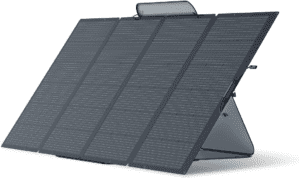 EcoFlow 400W Portable Solar Panels[/caption]
EcoFlow 400W Portable Solar Panels[/caption]
The larger 400 watt folding panel we own is bulky and although one person can lift and carry it, that doesn’t mean it is easy or that you would want to carry it very far. I recommend that most people use panels that are 200 watts or below. You can usually hook up several smaller panels.
Semi-Rigid Panels
This style is popular with RV owners or those that want to easily mount a panel on the roof of a golf cart or similar. They do not fold but they are very thin, durable, and lightweight. Unlike a lot of folding panels, these are rugged enough to leave out in the weather for extended periods of time. Semi rigid panels are far less expensive than their folding counterparts.
[caption id=“attachment_528314” align=“aligncenter” width=“266”]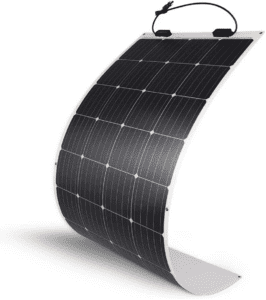 Renege Flexible Solar Panels[/caption]
Renege Flexible Solar Panels[/caption]
Conclusion
During uncertain times, it's good to have a reliable backup source of power as a way to get more work done. Doing all the work entirely by hand to maintain a home or small farm is very difficult and, in many cases, impossible to achieve.The ability to use electric machinery to keep gardens tidy and productive is invaluable. Food production is a subject that is on more people’s minds than ever because of rising costs and environmental factors such as drought and fertilizer shortages. These tools are perfect for food-related homesteading projects.
Do you use electric tools on or off grid? What brands would you recommend to others? Do you own a power center not discussed in the article that you would like to recommend to the Peak Prosperity tribe?
This is a companion discussion topic for the original entry at https://peakprosperity.com/using-electric-power-tools-during-fuel-shortages-blackouts/

